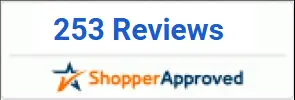Product Description
Find answers to common questions about our product, including dosage, storage, and side effects.
- Trelegy Ellipta is indicated for the long-term, once-daily maintenance treatment of airflow obstruction in patients with chronic obstructive pulmonary disease (COPD), including chronic bronchitis and/or emphysema.
- It is also prescribed to reduce exacerbations in patients with a history of exacerbations, and to improve symptoms and lung function in COPD patients.
- The recommended dosage of Trelegy Ellipta is one inhalation once daily.
- Each inhalation delivers a fixed dose combination of fluticasone furoate (an inhaled corticosteroid), umeclidinium (an anticholinergic), and vilanterol (a long-acting beta agonist).
- Trelegy Ellipta should be administered at the same time every day, preferably in the morning.
- Before using the inhaler for the first time or if it has not been used for more than a week, patients should prime it by releasing one puff into the air.
- Patients should exhale fully, place the mouthpiece between their lips, and inhale deeply and forcefully to ensure the medication reaches the lungs.
- After inhalation, patients should hold their breath for a few seconds and then exhale slowly and steadily.
- Patients should rinse their mouth with water after each use to reduce the risk of oral candidiasis (thrush).
- If a dose is missed, patients should take it as soon as remembered. However, if it is almost time for the next dose, patients should skip the missed dose and take the next dose at the regular time.
- Patients should not exceed the prescribed dosage of Trelegy Ellipta without consulting their healthcare provider.
- If there are any questions or concerns about the dosage or administration of Trelegy Ellipta, patients should consult their healthcare provider or pharmacist for guidance.
- Common side effects of Trelegy Ellipta may include headache, throat irritation, or cough.
- Some individuals may experience fungal infections in the mouth or throat, known as oral candidiasis or thrush, while using Trelegy Ellipta.
- Trelegy Ellipta may increase the risk of pneumonia, particularly in patients with COPD.
- It may also lead to increased heart rate, palpitations, or chest discomfort in some individuals.
- Rarely, serious side effects such as paradoxical bronchospasm (worsening of breathing difficulties) or hypersensitivity reactions may occur with the use of Trelegy Ellipta.
- Contact your healthcare provider if you experience any persistent or severe side effects while using Trelegy Ellipta.
- Inform your healthcare provider about any existing medical conditions, especially heart disease, high blood pressure, or diabetes, before using Trelegy Ellipta.
- Let your healthcare provider know if you are pregnant, planning to become pregnant, or breastfeeding, as the safety of Trelegy Ellipta during pregnancy or lactation has not been established.
- Inform your healthcare provider if you have a history of allergies to medications or any other substances, as Trelegy Ellipta may contain inactive ingredients that can cause allergic reactions.
- Use caution when using Trelegy Ellipta if you have a history of narrow-angle glaucoma or urinary retention, as it may worsen these conditions.
- Monitor for signs and symptoms of pneumonia, such as fever, cough, or difficulty breathing, while using Trelegy Ellipta.
- Use caution when driving or operating machinery after using Trelegy Ellipta, as it may cause dizziness or blurred vision in some individuals.
- Inform your healthcare provider about all medications, supplements, and herbal remedies you are taking, as they may interact with Trelegy Ellipta and affect its effectiveness or increase the risk of side effects.
- Keep Trelegy Ellipta out of reach of children and pets, and store it at room temperature away from moisture and heat.
- Follow up with your healthcare provider regularly to monitor your response to Trelegy Ellipta and adjust the treatment plan as needed.
| Generic name: | Fluticasone Furoate/Umeclidinium Bromide/Vilanterol Trifenatate, Fluticasone furoate/Umeclidinium Bromide/Vilanterol Trifenatate |
|---|---|
| Formulation: | Inhalation Powder |
| Strength(s): | 100/62.5/25mcg, 200/62.5/25mcg |
| Quantities Available: | 30, 30, 90 |
Still have a question?
Connect with Our Support Team for Personalized Assistance and Guidance!












